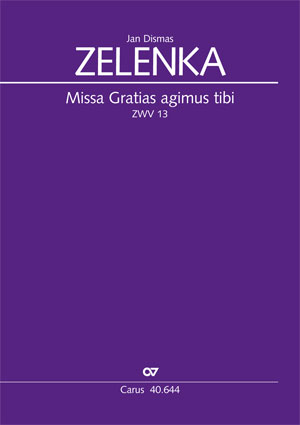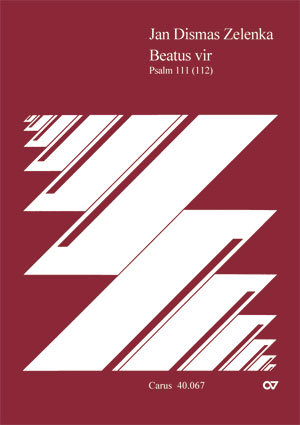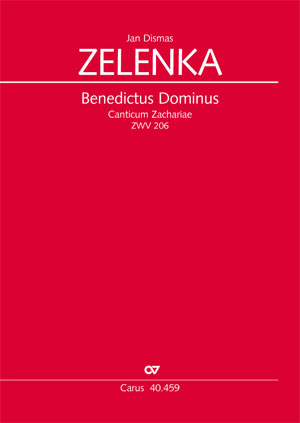
Missa Gratias agimus tibi
ZWV 13, 1730
-
Composer
Jan Dismas Zelenka
| 1679-1745The Bohemian composer Jan Dismas Zelenka was a double bass player and church music composer at the Saxon court of the Elector August the Strong and his son Friedrich August II. In the years after 1721 he composed an extensive repertoire of Catholic church music together with the Kapellmeister Johann David Heinichen. These works, together with the Dresden operas composed by Johann Adolf Hasse in quick succession from 1731 onwards, established the reputation of the Saxon court as one of the most important musical centers of the late Baroque period. Personal details
-
Editor
Thomas Kohlhase
| 1941
-
Vocal score arranger
Harry Schröder
| 1956-2022
-
Continuo realization
Paul Horn
| 1922-2016Paul Horn war ein deutscher Kirchenmusiker, Organist, Komponist und Musikwissenschaftler. Er studierte Kirchenmusik und Orgel an der Evangelischen Kirchenmusikschule Esslingen am Neckar bei Hans-Arnold Metzger und Musikwissenschaft, Theologie und Geschichte an der Universität Tübingen. Seine berufliche Laufbahn begann als Kantor an der Evangelischen Michaelskirche in Stuttgart-Degerloch. 1954 wurde er Kantor an der Evangelischen Stadtkirche Ravensburg, eine Position, die er bis zu seiner Pensionierung innehatte. Als Musikwissenschaftler arbeitete Horn bis ins hohe Alter eng mit Carus zusammen. So stammen zahlreiche Carus-Klavierauszüge aus seiner Feder. Personal details
Reviews
Bohemian-born Jan Dismas Zelenka (1679-1745) a student of Fux, was court music director at Dresden. His output of church music, which includes over 20 Masses, has recentlv begun to be studied, and editions of several of his Masses are newly published or being prepared. The ”Missa Gratias agimus tibi” is a festive cantata Mass, divided into 17 movements and scored for a large ensemble SATB chorus, SSAATB soloists, two flutes, two oboes, four trumpets, two violins, viola, and basso continuo with cello, bass, bassoon, and organ). Completed in 1730, this late-Baroque Mass shows Zelenka to be a composer of distinct originality and inventiveness, possessing a wealth of ideas. The title ”Gratias agimus tibi” refers to the unusual setting of that text (from the second movement of the Gloria) for soprano solo accompanied by two obbligato flutes and a high bass line provided by unison violins and violas. Zelenka is a master of contrapuntal writing, which he introduces in large measure at the traditional points such as the conclusion of the Gloria and Credo as well as other places, e.g., an elaborate fugal structure in the Kyrie. He is equally at home in the homophonic idiom, as seen in the first section of the Credo, where a vigorous ostinato in the strings propels chordaI textures in the voices. The original source of this Mass, the composer’s ”draft” autograph score, presents numerous problems which the editor has handled with great care and skill. Kohlhase provides an extensive historical introduction and performance suggestions based on information derived from relevant sources and performance practice in the Dresden court.
The critical notes are especially useful because the editor not only gives the original reading, but, in many cases, explains the process of reasoning that led to his final decision about a given item in the score. For a choral group that has the necessary resources, the ”Missa Gratias agimus tibi” would make a fine addition to the ”standard repertoire.”
Jane Schatkin Hettrick, The American Organist, 3/93
Frequent questions about this work
 There are no questions and answers available so far or you were unable to find an answer to your specific question about this work? Then click here and send your specific questions to our Customer Services!
There are no questions and answers available so far or you were unable to find an answer to your specific question about this work? Then click here and send your specific questions to our Customer Services!







